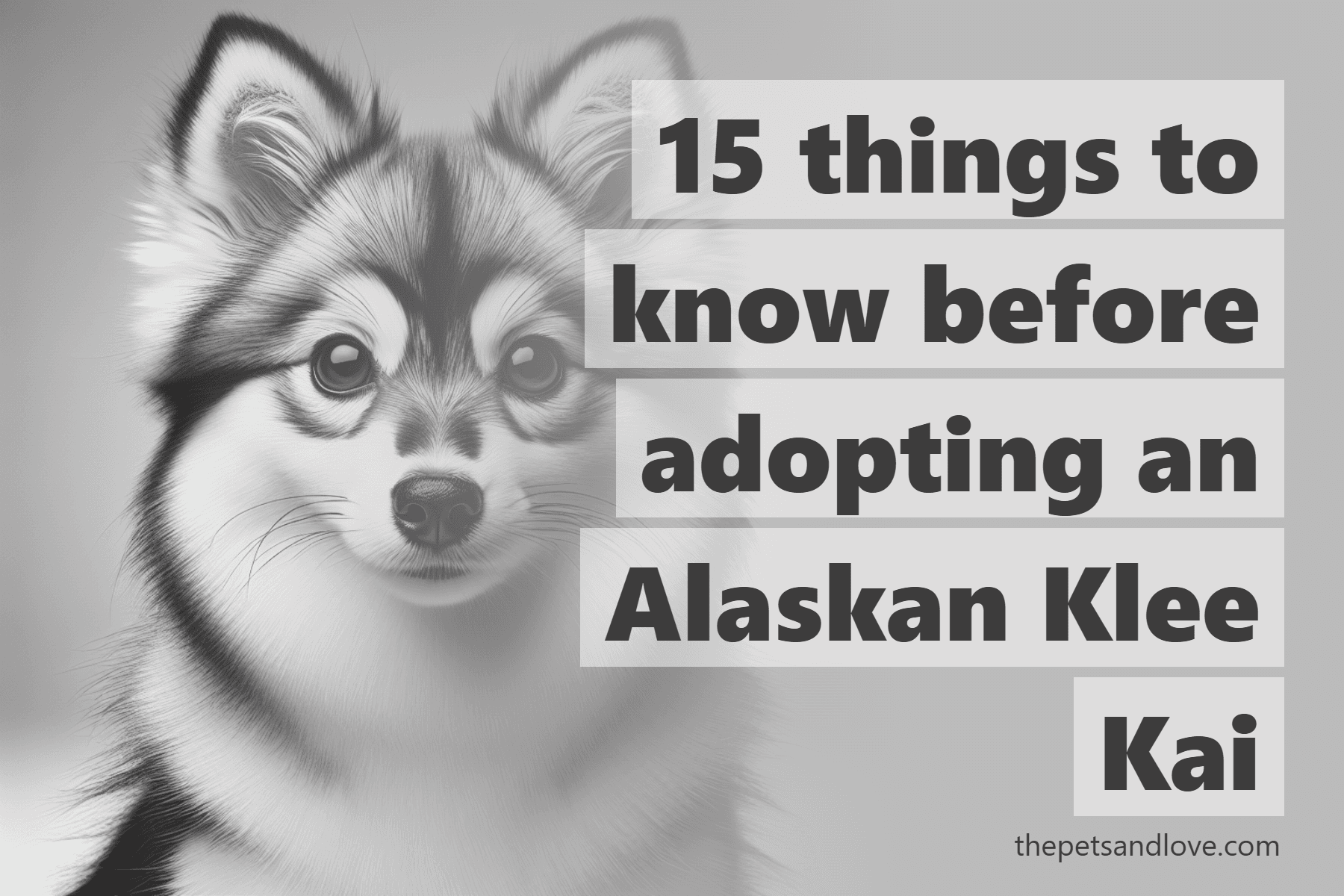15 things to know before adopting an Alaskan Klee Kai

Thinking about bringing home an Alaskan Klee Kai? These stunning little husky-lookalikes are smart, energetic, and loyal—but they’re definitely not a one-size-fits-all dog. After spending time with similar high-energy breeds, I can tell you this: the Klee Kai is adorable, but they need the right environment and owner to truly thrive.
Here’s what you really need to know before getting one:
They're Mini Huskies—With a Twist
Originally bred in the 1970s to be a smaller version of the Alaskan Husky, the Alaskan Klee Kai combines the looks of a husky with the size of a lap dog. They come in three sizes:
- Toy: under 13 inches
- Miniature: 13–15 inches
- Standard: 15–17 inches
Despite their size, they’re not mellow lapdogs. These pups are built for action and thrive with active owners.
Smart but Stubborn
Klee Kai are seriously intelligent. They pick up on training cues quickly and can excel in obedience and agility—but they’re also independent thinkers. Don’t be surprised if they try to outsmart you. Consistent, positive reinforcement from puppyhood is key. They respond really well to treats, praise, and mental puzzles.
If you’re not up for regular training sessions (and a bit of a mental chess game), this might not be the breed for you.
High Energy + High Maintenance
These dogs have energy to burn. Regular walks, playtime, training, and puzzle toys are non-negotiable. Without enough stimulation, they can develop destructive habits like barking, digging, or chewing.
They also have a thick double coat that sheds seasonally (and impressively). Weekly brushing is a must, and during shedding season, you’ll want to brush more frequently to keep the fur tumbleweeds under control.
Aloof, Not Aggressive
Klee Kai are loyal to their people but reserved with strangers. They’re not aggressive, but they won’t be the first to run up and make new friends either. Socialize them early and often to help them grow into confident adults. Think puppy classes, new environments, and meeting all kinds of people and pets.
Strong Prey Drive
These little dogs have big hunting instincts. Off-leash in an unfenced area? That’s a no-go. They’ll chase squirrels, birds, or anything that moves. Supervision and training are essential, especially if you have smaller pets in the home.
Not Ideal for Young Kids or Busy Families
Because of their small size and sensitive nature, Alaskan Klee Kai aren’t the best fit for homes with young children who play rough. They can also get overwhelmed by noise or chaos. Teens and adults who understand gentle handling are a better match.
Also, if your schedule keeps you out of the house most of the day? This breed might struggle. They form strong bonds and can develop separation anxiety if left alone too long. When lonely, they may bark, become destructive, or try to escape.
Talkative (Sometimes Too Much)
Barking, howling, and “talking” are common ways Klee Kai express themselves. It’s cute—until it’s not. If you live in an apartment or close quarters, be prepared to work on managing vocal behavior. Again, training and exercise go a long way.
Healthy, But Watch for These Issues
Generally, Klee Kai are healthy and can live 12–16 years. But like all breeds, they have their risks:
- Hip dysplasia
- Eye problems like cataracts and progressive retinal atrophy
Make sure your breeder does proper health screenings and always keep up with regular vet visits.
Hard to Find, So Choose Your Breeder Carefully
This is a rare breed, so you may need to wait or travel to find a reputable breeder. Avoid anyone who won’t share health clearances or let you meet the puppy’s parents. A good breeder will prioritize welfare and help you decide if the breed fits your lifestyle.
Final Thoughts
Alaskan Klee Kai are beautiful, smart, and full of personality—but they’re not low-maintenance. If you’re active, committed to training, and able to provide lots of attention, they can be amazing companions. But for families with young kids, long work hours, or a more laid-back lifestyle, another breed may be a better fit.
Take your time, do your research, and make sure your lifestyle matches their needs. That’s the best way to set both you and your future furry friend up for success.
Take the Quiz
Is an Alaskan Klee Kai Right for You?
The Alaskan Klee Kai is a small, intelligent, and energetic dog that resembles a miniature Husky. Discover if this playful and alert breed is the perfect match for your lifestyle by taking our quiz! Answer all questions below to discover your compatibility score and get personalized insights.
Question #1: What is the main reason you want a dog?
Question #2: How active is your lifestyle?
Question #3: How much time can you dedicate to your dog daily?
Question #4: What best describes your home environment?
Question #5: What size dog do you prefer?
Question #6: What personality traits do you want in your dog?
Question #7: How much grooming can you handle?
Question #8: Who else lives with the dog?
Question #9: Is this your first dog?
Please answer all 9 questions to see your results
